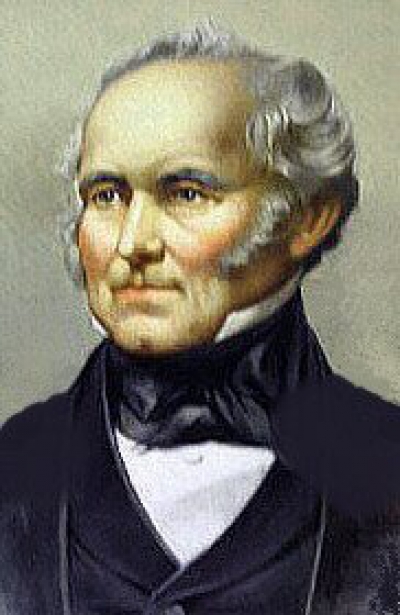RMS Aquitania was a British ocean liner of the Cunard Line in service from 1914 to 1950. She was designed by Leonard Peskett and built by John Brown & Company in Clydebank, Scotland. She was launched on 21 April 1913 and sailed on her maiden voyage from Liverpool to New York on 30 May 1914. Aquitania was the third in Cunard Line's grand trio of express liners, preceded by RMS Mauretania and RMS Lusitania, and was the last surviving four-funnelled ocean liner. Shortly after Aquitania entered service, World War I broke out, during which she was first converted into an auxiliary cruiser before being used as a troop transport and a hospital ship, notably as part of the Dardanelles Campaign.
Returned to transatlantic passenger service in 1920, she served alongside the Mauretania and the Berengaria. Considered during this period of time as one of the most attractive ships, Aquitania earned the nickname "the Ship Beautiful" from her passengers. She continued in service after the merger of Cunard Line with White Star Line in 1934. The company planned to retire her and replace her with RMS Queen Elizabeth in 1940.
However, the outbreak of World War II allowed the ship to remain in service for ten more years. During the war and until 1947, she served as a troop transport. She was used in particular to take home Canadian soldiers from Europe. After the war, she transported migrants to Canada before the Board of Trade found her unfit for further commercial service. Aquitania was retired from service in 1949 and was sold for scrapping the following year. Having served as a passenger ship for 36 years, Aquitania ended her career as the longest-serving Cunard vessel, a record which stood for six years until overtaken by RMS Scythia's service record of 37 years. In 2004 Aquitania's service record was pushed into third place when Queen Elizabeth 2 became the longest-serving Cunard vessel.
Cunard Line () is a British cruise line based at Carnival House at Southampton, England, operated by Carnival UK and owned by Carnival Corporation & plc. Since 2011, Cunard and its three ships have been registered in Hamilton, Bermuda.In 1839, Samuel Cunard was awarded the first British transatlantic steamship mail contract, and the next year formed the British and North American Royal Mail Steam-Packet Company in Glasgow with shipowner Sir George Burns together with Robert Napier, the famous Scottish steamship engine designer and builder, to operate the line's four pioneer paddle steamers on the Liverpool–Halifax–Boston route. For most of the next 30 years, Cunard held the Blue Riband for the fastest Atlantic voyage. However, in the 1870s Cunard fell behind its rivals, the White Star Line and the Inman Line. To meet this competition, in 1879 the firm was reorganised as the Cunard Steamship Company, Ltd, to raise capital.In 1902, White Star joined the American-owned International Mercantile Marine Co. In response, the British Government provided Cunard with substantial loans and a subsidy to build two superliners needed to retain Britain's competitive position. Mauretania held the Blue Riband from 1909 to 1929. Her running mate, Lusitania, was torpedoed in 1915 during the First World War.
In 1919, Cunard relocated its British homeport from Liverpool to Southampton, to better cater for travellers from London. In the late 1920s, Cunard faced new competition when the Germans, Italians and French built large prestige liners. Cunard was forced to suspend construction on its own new superliner because of the Great Depression. In 1934, the British Government offered Cunard loans to finish Queen Mary and to build a second ship, Queen Elizabeth, on the condition that Cunard merged with the then ailing White Star line to form Cunard-White Star Line. Cunard owned two-thirds of the new company. Cunard purchased White Star's share in 1947; the name reverted to the Cunard Line in 1950.Upon the end of the Second World War, Cunard regained its position as the largest Atlantic passenger line. By the mid-1950s, it operated 12 ships to the United States and Canada. After 1958, transatlantic passenger ships became increasingly unprofitable because of the introduction of jet airliners. Cunard undertook a brief foray into air travel via the "Cunard Eagle" and "BOAC Cunard" airlines, but withdrew from the airliner market in 1966. Cunard withdrew from its year-round service in 1968 to concentrate on cruising and summer transatlantic voyages for holiday makers. The Queens were replaced by Queen Elizabeth 2 (QE2), which was designed for the dual role.In 1998, Cunard was acquired by the Carnival Corporation, and accounted for 8.7% of that company's revenue in 2012. In 2004, QE2 was replaced on the transatlantic runs by Queen Mary 2 (QM2). The line also operates Queen Victoria (QV) and Queen Elizabeth (QE). As of 2019, Cunard is the only shipping company to operate a scheduled passenger service between Europe and North America.

1914May, 30
The new, and then the largest, Cunard ocean liner RMS Aquitania, 45,647 tons, sets sails on her maiden voyage from Liverpool, England, to New York City.
Choose Another Date
Events on 1914
- 28Jun
Assassination of Archduke Franz Ferdinand of Austria
Archduke Franz Ferdinand of Austria and his wife Sophie are assassinated in Sarajevo; this is the casus belli of World War I. - 26Jul
Bulgaria
Serbia and Bulgaria interrupt diplomatic relationship. - 5Aug
Traffic light
In Cleveland, Ohio, the first electric traffic light is installed. - 15Aug
Frank Lloyd Wright
A servant of American architect Frank Lloyd Wright murders seven people and sets fire to the living quarters of Wright's Wisconsin home, Taliesin. - 1Sep
Petrograd
St. Petersburg, Russia, changes its name to Petrograd.

 English
English  español
español  français
français  português
português  русский
русский  العربية
العربية  简体中文
简体中文 